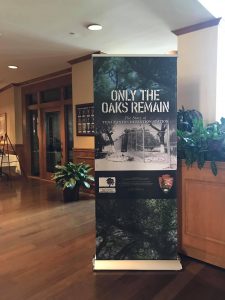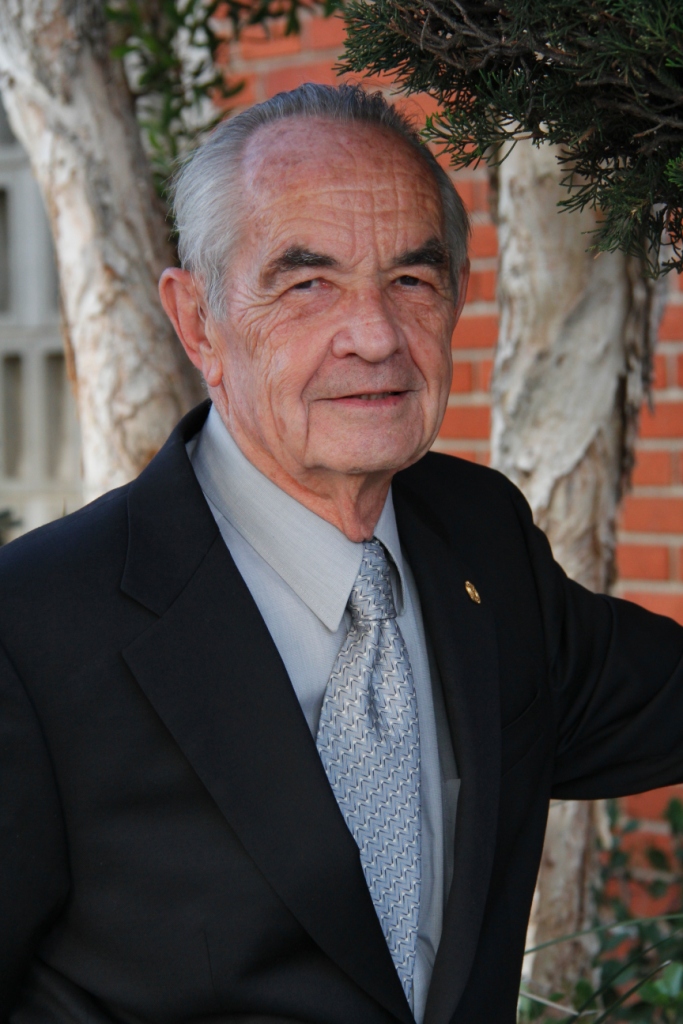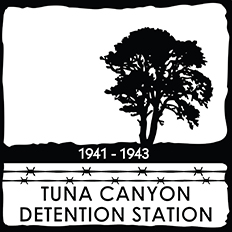With a National Parks Service Japanese Confinement Site Grant, the Coalition created a traveling exhibit that tells the story of Tuna Canyon Detention Station and the Japanese, German, and Italian immigrants and others who were incarcerated there.

Only the Oaks Remain
 Introducing
Introducing
The Reissa Foundation has generously sponsored a lightweight retractable traveling exhibit. We plan to expand our educational outreach to churches, schools, museums, and libraries with new beautiful images produced by JCRR designs that tells the Tuna Canyon Detention Station stories while recreating the California sycamores and oak grove.
Now there are two choices for displays for various spaces and time limits. The A frame requires one day in advance to set up. The retractables can be set up upon arrival. For example, it can be on view for one day to six months.
New Legacy Project 1 interviews can be set up as well as the video of the now lost site. The 36 panels can fit in the trunk of a car making it easy and affordable to move from place to place. The diorama is available upon request.
In addition to the exhibit, we offer speakers or panels with research customized to your region.
Travel expenses vary based on distance from Los Angeles. Best case scenario is linking geographical locations.
Donations towards travel expenses for out of state for 2-4 people will be gratefully accepted.
What does the exhibit mean to me?

Of the many community projects I have championed over the years, to be involved in The Tuna Canyon Exhibit, “Only the Oaks Remain”, has been the most important project for me as it relates to the past, present, and the future. The exhibit represents years of preparation by people of a wide range of talents, races, & ethnicities with a goal, to determine what happened at the WWII Tuna Camp and more important to educate and remind the American public that it must never happen again. The timing is perfect with the world in its current state as people are divided over race and religion as east meets the west. The exhibit reminds us how a few racist coming together can spread fear that affects the outcome of how a nation responds to war in a time of crisis and fear. The tribal barriers have to come down on both sides for a lasting peace.
For over seventy`years the Tuna Camp had slipped into the shadows where history often resides only to be rediscovered by those of us who care and that is why this exhibit is so important to me.
About the Traveling Exhibit
Topics:
A introduction
B What was Tuna Canyon
C How detention was even possible
D Honor Wall
E Who was at Tuna Canyon
F What was it like to be an enemy alien
It consists of 18 A frames that become 36 panels all together
6 overhead roofs
4 iPads
3 notebooks
diorama (3×5)
and accompanying shipping cases
Weight: 250# for one shipping case with 3 panels and 1 canopy
Height per panel; 84 inches
Width per panel: 36 inches
Foot print:36 inches between the two panels
ADA rules firmly observed
Smallest space 10×20 feet at
San Diego History Museum
Largest space was SFVJACC basketball gym.
Need to store shipping cases
Diagrams available for
San Diego History Museum
JANM
Manzanar barrack 20×25
Santa Barbara History Museum
Length of stay
I day (SFVJACC)
16 weeks ( JANM)
Installation
Takes 2-4 hours with help
2 tall ladders
Preferred portage:Freight Center
We bring it and set it up, but could use some manual labor.
We prefer longer stays of 3 or more months.
Insurance value $70,000
Transit to next location is expected.





